Written By:
Will Purcell
When it comes to increasing enrollment for independent schools, the marketing playbook has changed. With the digital age driving advancements in technology, schools are increasingly pressed to find new methods to increase outreach and ultimately, grow enrollment.
Traditional methods, such as direct mailers or local advertising simply do not have the same impact as they once did. Especially considering the easy access to information through search engines and online research, prospects have more control now than ever before.
An excellent way for schools to adapt to these changes is by applying the inbound strategy.
Free Toolkit – Create Student Personas For Your School
What is Inbound Marketing?
Inbound marketing is a business methodology that attracts customers by creating valuable content and experiences tailored to them. Essentially, inbound marketing forms connections with consumers based on what they’re looking for and solves their problems through less intrusive methods.
The inbound methodology uses a “flywheel” approach to aid in the buyer’s journey—the process buyers go through to become aware of, consider and evaluate, and decide to purchase a new product or service.
Applying the inbound methodology to your school involves several moving pieces through a flywheel model that places the needs of students and families at the center of a particular campaign.
That methodology breaks down the flywheel stages into:
- Attract: Bringing strangers to your website through relevant, strategic content that addresses a pain point.
- Engage: Start creating relationships with your web visitors by engaging with them on multiple channels (such as, email, live chat, social media). Use these tools to gain more information with forms or a call-to-action.
- Delight: Gain feedback so that your web visitors (in this case parents and students) become promoters for your school and keep the flywheel moving.
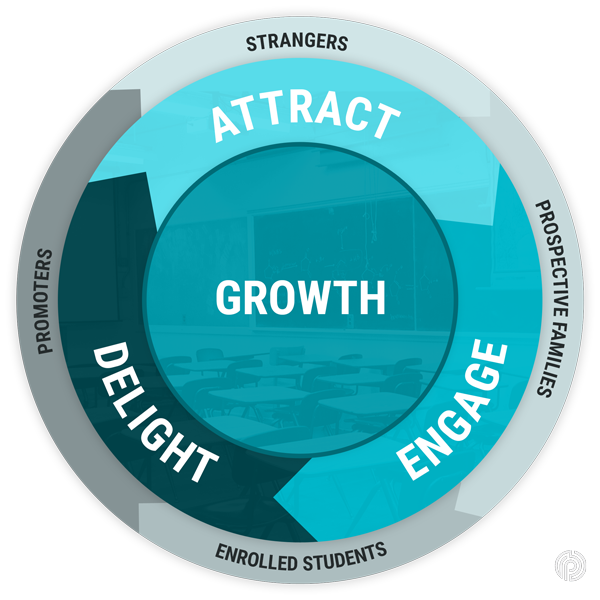
Understanding these concepts are important, however, it can be challenging when applying them in a school marketing environment. This leads to questions such as: What does the inbound methodology look like? How do I apply it to my school? What examples can I follow?
Using examples from three independent schools and a university who have benefited from utilizing the inbound methodology, we’ve provided some clarity to the potential challenges that may arise in your school’s inbound marketing efforts.
Understanding the Journey of a Prospective Family
Before diving into the details of the inbound methodology, it’s important to understand the journey a prospective family takes as they search for a new school. Firstly, as a school marketer, it’s critical to recognize that each prospective family will inevitably have a pain point. These pain points lead to change, or at least spark a desire for prospects to search for potential solutions.
Common paint points for prospective parents could include concerns about classroom size, their child’s social skills (Will they fit in?), college prep materials, or even the importance of a faith-based education.
When it comes to addressing these pain points, it’s helpful for school marketers to break down their process into three simple stages: awareness, consideration, and decision.
- Awareness: During this stage prospective families have identified their pain points and are actively searching for solutions to address those issues. Searching on Google, checking social media, and researching school websites are all common activities in this stage.
- Consideration: At this point, a prospective family has an idea of what they’re looking for in a school and as a result, they begin to engage with that school (this could include attending open houses, filling out informational forms, or signing up for newsletters).
- Decision: After reviewing marketing materials, attending open houses, and speaking with school administrators, prospective families will enter the decision stage. This stage is ultimately where families will review all materials and factors surrounding a school and make a decision.
Understanding each stage of a prospective family’s journey is important, however, it’s equally important to understand your role as a guide to help progress your prospects throughout each stage as well.
Attracting Prospective Families at the Earliest Stages of their Journey
In the awareness stage, the main goal should be to make your website visible, attractive, and helpful to potential prospects. To do this, you need to establish who your audience is and then develop content that helps that audience address a pain point or challenge.
During this stage, prospective parents are beginning to sense a dissatisfaction with the status quo of their current school. This could be a lack of strong academics, a disconnect between the parent’s values and that of the school administration, or that their child isn’t fitting in with the other kids at school.
This is why conveying your school’s mission and vision is crucial to success in this early stage, because families begin to research how others have overcome similar challenges by searching Google, or asking friends on Facebook.
To uncover these needs and challenges, you might consider surveying the local community. This could lead you to find what prospective families are asking, such as: What are the factors that influence learning? What should I look for in a classroom? What questions should I ask about curriculum?
To help families find answers to those questions, Whitby School launched an admissions-focused blog that was SEO optimized, helping them rank for high-value terms like “9 Factors that Influence Language Learning” and “7 Key Characteristics of a Montessori Preschool.”
Publishing content regularly has helped them achieve steady organic traffic growth by 58% within one year.
Engaging Parents and Students as they Consider Their Options:
Once a school (in this example Whitby) has successfully attracted visitors to their website, they convert anonymous visitors into known inquiries by promoting their helpful guide title “11 Questions to Ask When Considering a Private School.”
This offer is relevant to the original topic that attracted the parent to the website, but has enough value that they would be willing to pay for it with their name and email address.
Whitby builds up the value of this resource by displaying it as a physical book and highlighting it with a well designed call-to-action on their blog. This CTA (see below) brings the visitor to a landing page built in HubSpot, where the visitor can provide some simple contact details via a short form in exchange for receiving the download.

After downloading, they are redirected to a thank you page that invites the family to register for an upcoming information session, or to schedule a time to meet with the admissions office. While it’s likely that this step has led parents to take the next important step in the journey, Whitby likely realized that most parents wouldn’t be ready to take the leap just yet, so they continue to engage with parents every few weeks with a series of automated emails designed to answer some of the other questions commonly asked at this stage.
This pattern continues until the parents register for an event or apply—our indicator that the family has progressed from Awareness to Consideration.
Another example of a helpful guide can be found at Sewickley Academy, where prospective parents are led to a downloadable guide when reading a blog highlighting a faculty member. This two-part engagement works to provide insight into the school’s faculty while giving readers a “next-step” option to further engage in Sewickley Academy’s resources to ultimately find the right school.
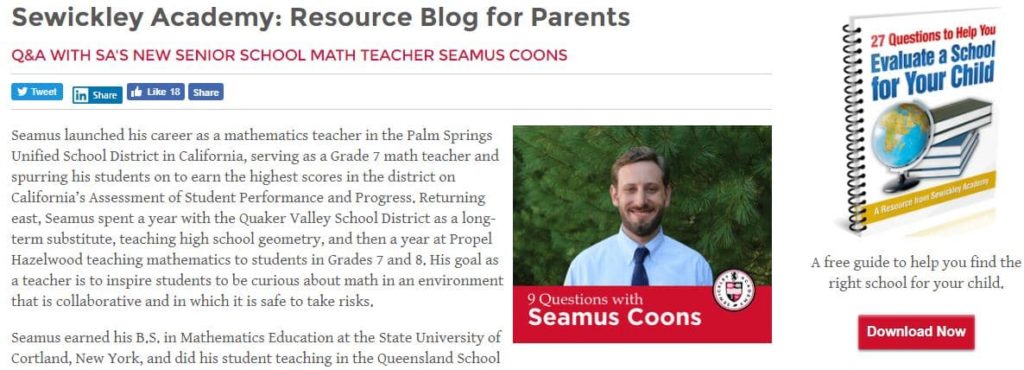
Tufts University also uses inbound marketing tools like HubSpot to engage prospective students. While navigating Academics and Admissions related information, a helpful “live” chat icon appears in the bottom-right of their screen. In this specific example, their services offering a smooth transition from high school to college classes is highlighted.
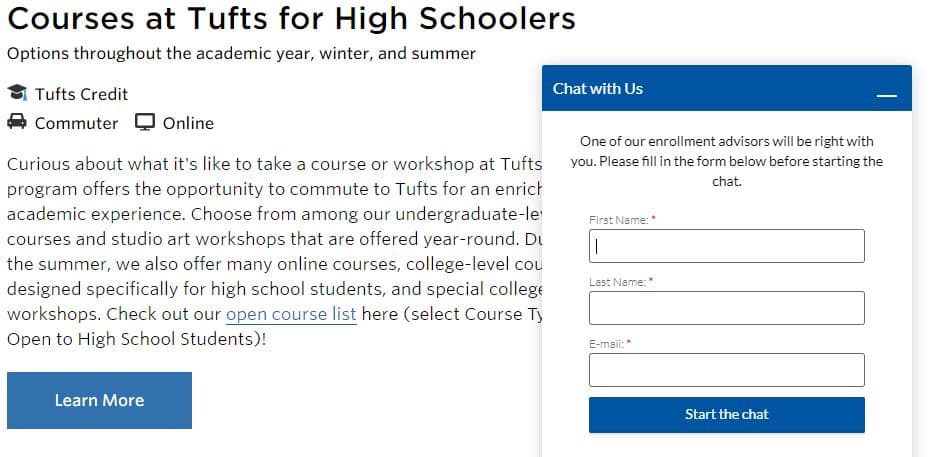
Through this tool, prospective students and families can engage with an admission counselor from their laptop at work or home without picking up a phone. This is likely to increase the volume of inquiries that Tufts receives, because it gives prospects more than one option to engage—chat, call, or email.
Remember, in this stage, your school is beginning to directly connect with prospects. Therefore, it’s crucial your school’s website is optimized and SEO friendly, as information such as open house dates, admission deadlines, and contact forms must be transparent and easy to access. An unoptimized website with hard to find dates and information can drastically change a prospect’s view of a school.
Delighting Families to Fuel Word of Mouth
The inbound methodology doesn’t stop with enrollment. Smart school marketers continue to use digital tools to engage and delight students and their families, from the moment they are admitted to years after they graduate.
Proctor Academy creates short videos highlighting special events and activities on campus, like the recent Special Olympics Fun Day 2019.

This type of content could be beneficial for parents because it shows their children actively contributing to a meaningful cause. As a result, the school’s social media presence could increase and help them reach even more prospective families in the community. Essentially, it showcases another outlet to showcase the school’s values and overall mission.
Sewickley Academy sends a bi-annual newsletter to alumni and parents, thanking them for their dedication to the school, and highlighting important stories to help spread the school’s message.
The Whitby School also creates a podcast for parents that speaks to important topics in education while encouraging volunteerism through the Parents Association. This podcast also links to parenting workshops that help further engage parents with their child’s education.
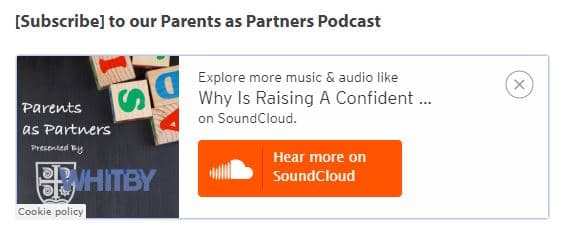
Email can be a powerful tool to engage alumni, parents, and students as well. Whitby provides another example of this, as they distribute emails with blog updates highlighting in-depth stories about the school’s latest news and achievements.
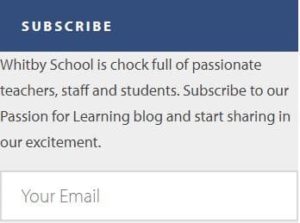
Essentially, the delight stage is about bringing your inbound marketing strategy full circle. By creating a positive, helpful experience for your prospects, they’ll begin to evangelize your services and resources to others. Considering people are 90 percent more likely to trust and buy from a brand recommended by a friend, progressing word-of-mouth marketing for your school in the delight stage is vital to success.
Placing the Student and Their Family at the Center of a School’s Marketing Efforts
As these examples show, placing students and their families at the center of a school’s marketing efforts can be a powerful way to fuel your enrollment funnel.
After all, applying this student-focused methodology to your school marketing campaign is about creating long-term, sustainable growth. By attracting visitors to your website through valuable content, you become a figure of authority on meaningful subjects that help provide solutions to potential challenges. In turn, this method helps guide prospects through their journey to select the right school.
The inbound flywheel incorporates several moving pieces within each stage, so outsourcing services to help promote your campaign with these concepts is a great way to ensure success and ultimately, grow enrollment for your school.








